

As autumn arrives and the air cools, you might notice shifts in how you feel physically and emotionally. This isn’t just about the weather; it’s your body signaling it’s time to adapt.
Pitta Dosha is one of the three main energies in Ayurvedic medicine, combining the elements of fire and water. It controls digestion, metabolism, and energy levels. When Pitta is balanced, you feel motivated, focused, and energetic. However, if it’s out of balance, especially in autumn, you might experience irritability or digestive issues.
The drop in temperature and humidity can increase the fiery nature of Pitta, making these effects more pronounced if you have a Pitta-dominant constitution or an imbalance. Adjusting your diet, lifestyle, and self-care routines can help keep Pitta in check and keep you comfortable throughout the season.
If your Pitta is off balance, you might notice some of these signs:
As autumn arrives, it’s important to adjust your diet to keep your Pitta in balance. Eating the right foods can help cool down the fiery nature of Pitta and keep you feeling refreshed. Here’s a simple guide to adjusting your eating habits for a balanced season.
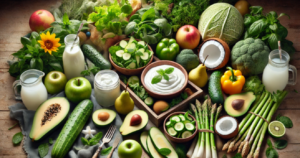
To balance the heat of Pitta, focus on foods that cool and hydrate. These foods help calm your digestive system and have a soothing effect. Incorporate these into your meals to manage your Pitta.
Examples of Cooling and Grounding Foods
To prevent Pitta from becoming too intense, it’s best to avoid spicy dishes, fried foods, and too much oil. These can increase Pitta and lead to discomfort, so choose gentler, more calming foods instead.
Staying hydrated is key to balancing Pitta. Drink plenty of water and herbal teas with cooling effects, like mint or chamomile. Soups and broths are also good choices. By keeping hydrated and choosing the right foods, you’ll help your body stay balanced and comfortable throughout autumn.
Keeping your Pitta in balance isn’t just about what you eat; it’s also about how you live. Here are some simple changes you can make to your daily routine to help balance Pitta and stay healthy, especially as the seasons change.
Start by adding calming activities to your day that relax both your body and mind. Try gentle, enjoyable practices like taking a warm bath with cooling essential oils, or spending time in nature. These small steps can help keep Pitta’s fiery energy in check.
Getting enough sleep is key to balancing Pitta. Aim for an early bedtime to cool down your body and mind. For exercise, stick to low-intensity activities like walking, swimming, or slow yoga. Avoid high-intensity workouts, as they can increase Pitta’s heat.
Meditation and yoga are perfect for calming Pitta. A short daily meditation can relax your mind and keep your emotions in balance. Gentle yoga poses, like Child’s Pose or Legs Up the Wall, can help cool and ground your body, reducing any extra heat.
With these easy adjustments, you can support your body’s natural balance and ease into the autumn season feeling calm and refreshed.
Balancing Pitta with herbal remedies can be a great way to keep things calm. Some herbs have natural cooling effects that can help soothe Pitta’s fiery nature. Here’s how you can use these herbal helpers to your advantage.
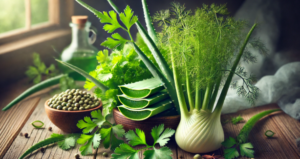
Herbal supplements can be a useful part of your routine. Just be sure to choose high-quality supplements from trusted sources. Follow the recommended dosages on the label, and it’s a good idea to check with a healthcare provider or Ayurvedic practitioner to make sure they’re right for you.
Herbal teas are an easy and enjoyable way to include cooling herbs in your diet. Try these options:
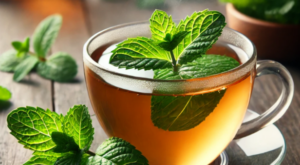
Mint Tea: Mint has a natural cooling effect and is a refreshing way to balance Pitta. Just steep fresh mint leaves in hot water.
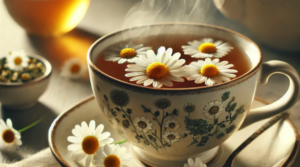
Chamomile Tea: Chamomile is known for its calming properties and can help ease Pitta-related stress. Enjoy chamomile tea in the evening to relax.
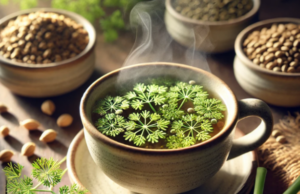
Coriander Fennel Tea: Combine coriander and fennel seeds in hot water for a soothing tea that helps balance Pitta and supports digestion.
By adding these herbal remedies to your daily routine, you can naturally balance Pitta and improve your overall health
Taking time for self-care is important for balancing Pitta and maintaining well-being, especially in the fall. Here are some simple and effective ways to calm Pitta and feel more balanced:
Use cooling oils like coconut oil or a Dosha Body Oil designed to balance Pitta. Warm a little oil and gently massage it into your skin with slow, steady movements. This practice helps calm the nervous system, hydrates the skin, and leaves you feeling relaxed and refreshed.

Being outdoors is grounding for Pitta. Whether it’s a peaceful walk, sitting by a river, or enjoying the autumn colors, spending time in nature helps bring balance. Calming indoor activities like reading, listening to soft music, or crafting can also reduce stress and settle Pitta’s energy.

Here are more ways to calm Pitta:
By adding these self-care rituals to your routine, you can help balance Pitta and stay grounded throughout the fall season. Even small habits can make a big difference in how you feel!
Adopting Ayurveda as autumn arrives can change how you feel during the season. By adjusting your diet, creating a calming routine, and taking care of yourself, you can keep Pitta balanced and enjoy a smoother transition. The important thing is to listen to your body and make changes that support your well-being. With these straightforward tips, you’ll feel more grounded and ready to make the most of this lovely time of year.
Pitta Dosha represents the elements of fire and water in Ayurveda. It controls digestion, metabolism, and energy levels. When balanced, Pitta helps you feel focused and energetic. When out of balance, it can lead to issues like irritability, inflammation, and digestive troubles.
Signs of Pitta imbalance include feeling unusually hot, experiencing frequent inflammation, having digestive issues, or feeling easily irritable. You might also notice symptoms like skin rashes or acidity. If you experience these symptoms, it might be time to take steps to balance your Pitta.
To balance Pitta, eat foods that are cooling and hydrating, like cucumbers, leafy greens, and sweet fruits. Avoid spicy, oily, and fried foods that can increase Pitta’s heat. Drinking plenty of water and herbal teas can also help.
Yes, adopting a calming daily routine can be beneficial. Try to maintain regular sleep patterns, engage in gentle exercises, and incorporate meditation or yoga to reduce stress. These changes can help soothe Pitta and promote overall balance.
Herbal remedies with cooling properties, such as aloe vera, coriander, and fennel, can help soothe Pitta. These herbs can be used in teas, supplements, or as part of your diet. They support digestion and help calm the heat associated with Pitta imbalance
Self-care practices like Abhyanga (self-massage) with cooling oils, taking warm baths with soothing essential oils, and spending time in nature can help calm Pitta. Engaging in relaxing activities and maintaining a balanced lifestyle are also effective in supporting Pitta balance.
Autumn’s cooler and drier weather can increase Pitta’s fiery nature. To manage this, adapt your diet and lifestyle to include more cooling and grounding practices. Make adjustments such as eating soothing foods, staying hydrated, and focusing on calming activities to maintain balance during the season.
If you find it challenging to balance Pitta on your own or if you experience persistent symptoms, consider consulting with an Ayurvedic practitioner. They can provide personalized advice and help you develop a tailored plan to address your specific needs and maintain balance.
Absolutely! Balancing Pitta not only helps with specific issues like inflammation and digestive troubles but also promotes overall health. When Pitta is in balance, you may experience improved energy levels, better digestion, and a more stable mood. This holistic approach contributes to a more harmonious and vibrant well-being.
The time it takes to see results can vary depending on individual factors and how consistently you apply the balancing practices. Some people notice improvements within a few days, while others may take a few weeks. Consistency is key, so sticking with dietary adjustments, lifestyle changes, and self-care practices will help you achieve and maintain balance over time.

The Holistic HIghway integrates traditional Western medical practices with Ayurveda medicine, creating a focus on prevention through nutrition, diet, and exercise; use of the latest genetic testing and other diagnostic techniques; and prescribed combinations of botanical medicines, supplements, therapeutic diets, detoxification programs, or stress-management techniques.

Integrative Health Expert | Ayurveda Practitioner | Author | Speaker
Kerry is a globally recognized leader in integrative medicine and the science of health known as Ayurveda. She is passionate about raising awareness of the need for a change in contemporary medicine that focuses on patient empowerment and a health-based (rather than disease-based) medical system.
Kerry is connected with The University of Pittsburgh Center for Integrative Medicine and remains a pioneer in the field of integrative medicine where she has developed a personalized system to manage chronic disorders by incorporating fundamental changes in diet, behavior, and stress while focusing on genetics.
This individualized program is so successful that many of her clients have achieved maximum healing and vitality after years of chronic problems!
More to Explore